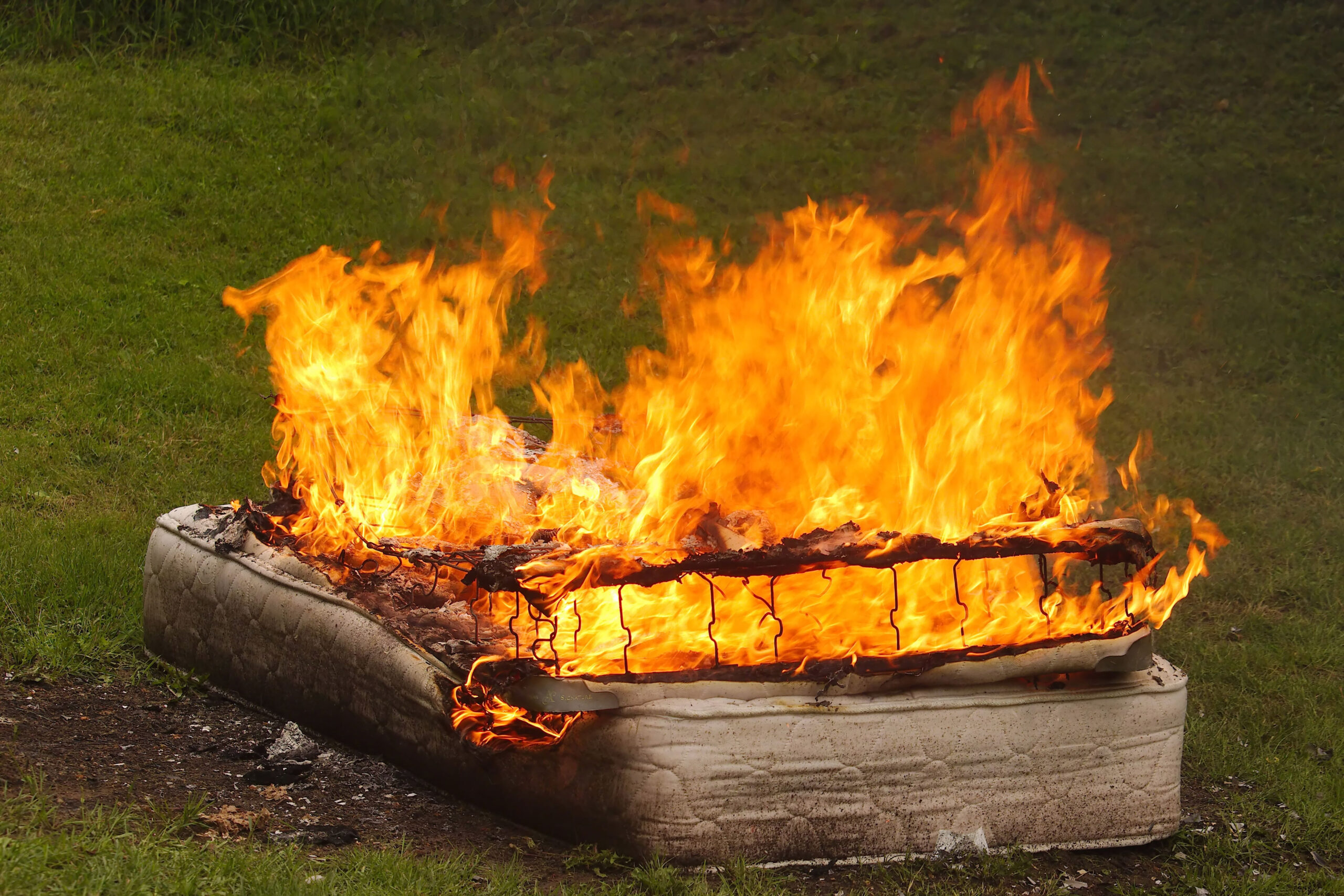When it comes to our health, we often focus on maintaining a balanced diet, regular exercise, and avoiding harmful substances. However, there might be a hidden danger lurking in an unexpected place – your mattress.
Recent revelations have brought to light the presence of fiberglass in some mattresses, raising concerns about potential health risks.
In this article, we will delve into the shocking reality of fiberglass in mattresses, how to detect it, and the dangers it poses to our well-being.
The Fiberglass Controversy
Fiberglass, a synthetic material composed of extremely fine fibers of glass, is commonly used for insulation purposes. It has excellent heat resistance properties and is widely used in various industries.
However, in recent years, fiberglass has made its way into the manufacturing of mattresses, particularly in low-cost options.
How Does Fiberglass End Up in Mattresses?
The presence of fiberglass in mattresses is often found in those with a zippered cover and is used as a fire retardant measure. It is incorporated within the mattress layers or wrapped around the foam.
The intention is to contain the spread of fire in the event of a mishap. While the motive behind using fiberglass is well-intentioned, the potential risks associated with its use have raised serious concerns among consumers.
Why is Fiberglass Dangerous?
Fiberglass poses a significant danger when it becomes airborne and its fine fibers are released into the surrounding environment.
These fibers are extremely small, almost microscopic, and can easily become airborne when the mattress cover is torn or damaged.
Inhalation of fiberglass particles can result in a range of health issues, including respiratory problems, skin irritation, and eye discomfort.
What the Scholars Say:
According to the International Journal of Environmental Research and Public Health, there have been public complaints expressing concerns about certain mattresses available in the current market that could potentially release fiberglass particles into the air.
Despite the promotion of mattress foam as free from chemicals, there is a lack of understanding among the general public regarding the composition of their covers.
To address this knowledge gap, a study was conducted where the covers of four newly purchased mattresses were sampled and examined using advanced analytical techniques including polarized light microscopy, SEM-EDS, and FTIR microspectroscopy.
The analysis revealed that two of the mattress covers contained more than 50% fiberglass in their inner sock layers.
Additionally, a small portion of the fiberglass, approximately 1%, had migrated to the adjacent fabric layers. This migration poses a potential risk of consumer exposure if the zipper on the outer cover is opened.
The observed fiberglass fragments had aerodynamic diameters ranging from 30 to 50 µm, indicating that they could potentially be inhaled through the nose, mouth, and throat. However, their size suggests that they are unlikely to penetrate deeper into the lungs.
No fiberglass was detected on the outer surfaces of the newly purchased mattresses. However, synthetic fibers found in the sock layers were identified as flame-resistant modacrylic containing vinyl chloride and antimony.
The presence of fiberglass and other chemicals in mattress covers poses a potential health risk if these materials are not adequately contained.
The absence of mattress covers in chemical-free certifications indicates a need for further improvements in mattress labeling and consumer education. It is important to address this issue to ensure the safety and well-being of consumers.
How to Detect Fiberglass in Your Mattress
The moment you discover that there might be fiberglass present in your mattress, it’s imperative that you take action. This would be the deciding factor between letting your family get ill or protecting them.
If you suspect that your mattress contains fiberglass, it is essential to take the necessary steps to confirm your suspicions. Here are some methods you can employ to detect the presence of fiberglass:
- Visual Inspection: Start by carefully examining the mattress cover for any signs of damage or wear. Look for small tears, holes, or loose threads that may indicate fiberglass exposure.
- Use a Flashlight: In a dark room, shine a flashlight on the surface of your mattress. Look for any glimmering particles or reflective material. Fiberglass fragments may appear as tiny, shiny specks.
- Conduct a Tape Test: Take a piece of clear adhesive tape and press it firmly onto various areas of your mattress cover. Gently peel off the tape and examine it for any fiberglass fibers that may have adhered to it.
- Seek Professional Help: If you are uncertain or unable to detect fiberglass on your own, consider contacting a professional mattress inspector who can provide an expert opinion and guidance.
The Health Risks of Fiberglass Exposure
Exposure to fiberglass can have serious implications for your health. Here are some of the risks associated with inhaling fiberglass particles:
- Respiratory Issues: Fiberglass fibers can irritate the respiratory system, leading to coughing, wheezing, and difficulty breathing. Prolonged exposure may increase the risk of developing chronic respiratory conditions such as asthma or bronchitis.
- Skin Irritation: Direct contact with fiberglass can cause skin irritation, itching, and redness. The fine fibers can penetrate the skin, causing discomfort and potential long-term skin issues.
- Eye Discomfort: Fiberglass particles can irritate the eyes, resulting in redness, itching, and watery eyes. In severe cases, prolonged exposure may lead to corneal damage.

Protecting Yourself and Your Loved Ones
If you discover fiberglass in your mattress or suspect its presence, it is crucial to take immediate action to mitigate the risks. Here are some steps you can take:
- Replace the Mattress: If you confirm the presence of fiberglass or are unable to determine its presence with certainty, consider replacing your mattress with a reputable, fiberglass-free option.
- Handle with Care: If your mattress contains fiberglass, avoid further damaging the cover or tearing it open, as this could release more fibers into the air. Take precautions when moving the mattress to prevent exposure.
- Professional Cleanup: In cases where fiberglass contamination is severe, it is advisable to seek professional assistance for thorough cleaning and removal of any loose fibers.
- Encase the Mattress: If replacing the mattress is not immediately possible, consider encasing it in a protective cover specifically designed to contain fiberglass particles. This can help reduce the risk of fiber release.
How Prevalent is Fiberglass in Mattresses?
Fiberglass is not typically discovered in mattresses as a part of their standard construction. Most mattresses are made using various materials such as foam, latex, springs, and fabric covers.
Fiberglass is not a common component of mattresses unless it is explicitly specified, such as in some specialized fire-resistant or industrial mattresses.
However, there have been cases where fiberglass has been found in certain mattresses, particularly in cheaper or older models that use fiberglass as a fire-retardant material.
These mattresses may have a thin layer of fiberglass embedded within the mattress cover or as a component of the fire barrier. In some instances, the fiberglass may become exposed or start to shed from the mattress, causing irritation or discomfort to the sleeper.
It’s important to note that finding fiberglass in mattresses is relatively rare and not a typical occurrence. If you have concerns about fiberglass in your mattress, it’s best to consult the manufacturer’s specifications or contact them directly to inquire about the materials used in their products.

